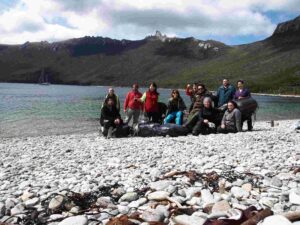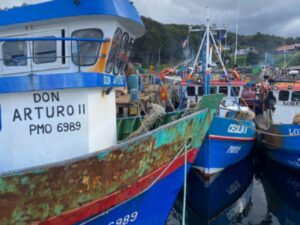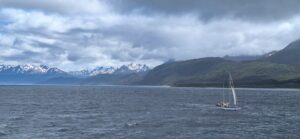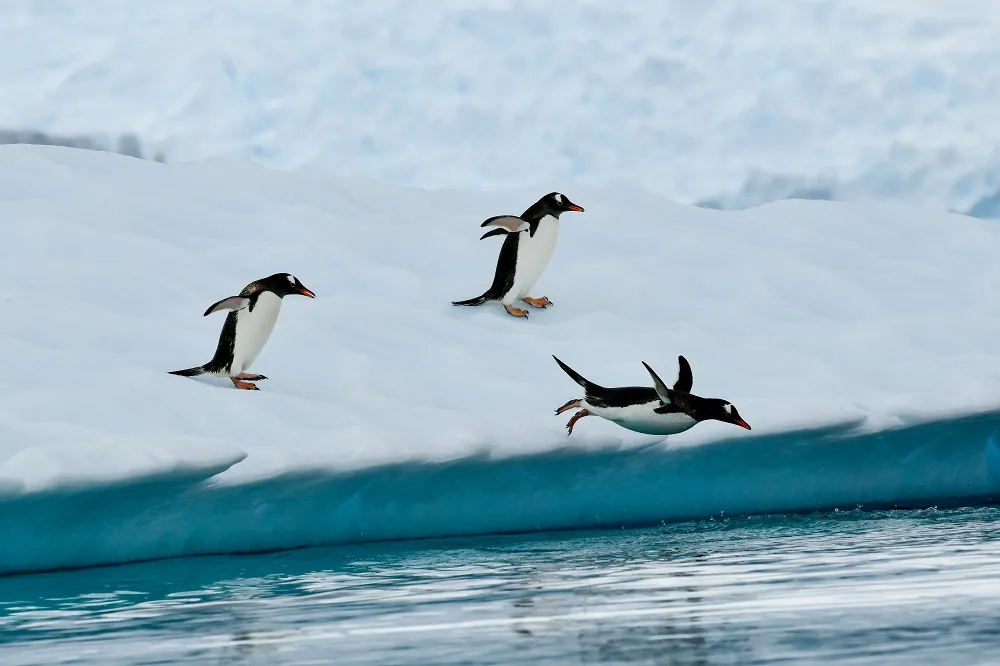Ocean Tramp blog 3rd Dec, 2022
CROSSING THE ANTARCTIC CONVERGENCE
Day Two of the Drake brought a rise in the number of avian visitors to Ocean Tramp. The star of the show? A giant southern petrel that toyed with massive waves before settling down to bob over the swell. Sadly, we didn’t have a repeat sighting of our dolphin friend from the day before.
Our sharp-eyed bird lovers have sighted the following species in the past few days alone: the wandering albatross; southern royal albatross; black-browed albatross; southern giant petrel; southern fulmar; Cape petrel; sooty shearwater; soft-plumaged petrel; blue petrel; Magellan penguin; Magellanic diving petrel; rock cormorant; snow petrel.
As a reminder that it’s always wise to treat the ocean and the ice with respect, we watched the movie “South: Shackleton 1919”, with original footage and stills of Shackleton’s heroic rescue of the crew of The Endurance taken by onboard photographer Frank Hurley.
The ocean was certainly friendlier today. With the Genoa and reefed mainsail filled with wind, we raced along at between 7.5 and 8 knots under blue skies (barring a brief snow flurry) and marveled as the sun sank slowly, turning the clouds to pearl.
At 9 pm, we marked a new stage of our journey by crossing the true biological boundary of Antarctica: the Antarctic Convergence. From this point on, water salinity and density will undergo drastic changes, while surface temperatures will plunge. From now on, we will need to be on the lookout for ice.
All aboard the Ocean Tramp are looking forward to more adventures in the Drake Passage tomorrow – and to arriving in the white wonderland of Antarctica the following afternoon.
Sarah Crang

Why visit Isla de los Estados?
Why Visit Isla de los Estados? A hidden gem of untouched wilderness and breathtaking landscapes A hidden gem of the







